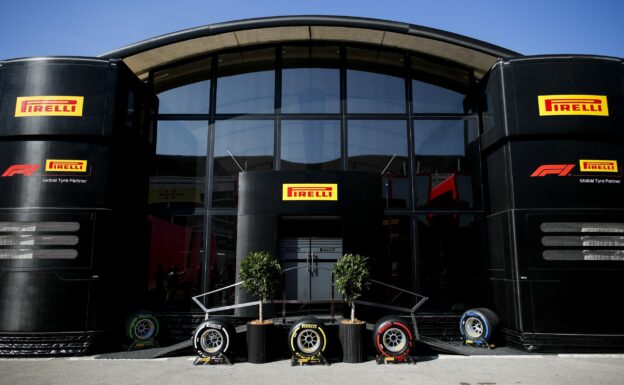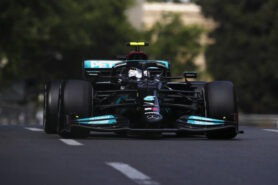Old F1 tyre expert questions Pirelli's blowout debris story

Jun.8 - A well-known Formula 1 tyre expert has publicly questioned Pirelli's explanation about the high speed tyre blowouts at Baku.
Even before Pirelli chiefs said a word, Max Verstappen correctly predicted that F1's official tyre supplier would blame his and Lance Stroll's scary incidents on track debris.
However, Kees van de Grint says as soon as he saw the incidents, he suspected it was in fact "a problem with the carcass".
Van de Grint is best known in Formula 1 circles for working for Bridgestone as Michael Schumacher's tyre engineer.
"In theory, there could have been debris on the track," he told Algemeen Dagblad newspaper. "But it seems to me that it happened at exactly the same lifespan on both Stroll and Verstappen's cars.
"It's quite a coincidence if it happens after 34 laps of running on both cars. And there was debris on the track for both Stroll and Verstappen, but not in between?"
Van de Grint said tyre failures are not highly unusual in Formula 1, "but it happens a bit too often now".
"I suspect that Pirelli was already nervous about Azerbaijan, especially when the teams were asked to increase the pressures to the maximum.
"You only do that if you're worried," he said.
However, like fellow Dutchman Verstappen, van de Grint wasn't surprised when Pirelli almost instantly declared that track debris was the likely problem.
"They've always had that story ready for the past few years now," he said. "It's always because of debris, or team mistakes, or the driving style. It's never the tyres.
"Some modesty and self-criticism would be good," van de Grint insisted.
"The current tyres were strengthened after the problems at Monza last year, so at least investigate what happened first before saying anything about it."
He even thinks the FIA should step in to ensure Pirelli investigates the Verstappen and Stroll incidents properly.
"After the Romain Grosjean accident, there was an extensive analysis of what happened," said van de Grint. "And rightly so. That should happen now because this is also about people's lives.
"These cars are now 99.9 percent safe, but just imagine if another car had rammed into Verstappen or Stroll at 300kph."
Van de Grint agrees with David Coulthard that the tyre situation in F1 would be greatly improved by the addition of a second manufacturer.
"David said on Sunday that this sort of thing happened much less often with Goodyear, Michelin and Bridgestone, and that's because competition logically makes a product better," he said.
✅ Check out more posts with related topics:













I think adding a second manufacture would be a backward step, they'd start taking risks. Tyre blowouts have always happened, perhaps have a maximum number of laps per tyre would help. Seemed crazy that some cars where coming in after 10 then expecting the new set to do 42, especially so with a crazy fast long straight.
The tires are shit. Pirelli selected the 3 softest compounds, instead of the middle 3 as before at Baku and then forced max pressure and stated a 40 lap life for the hards. FIA should investigate, which I would imagine rhey will. GPDA should do investigate as well. I have no sympathy for those who planned > 40 laps like Williams though...
Perhaps a better target for criticism are the corner workers doing a lousy job of cleanup. Brooming the carbon shards to the side of the track next to the wall is NOT cleanup. The debris quickly gets sucked back onto the racing line when the cars pass at speed. I'm just sayin'.....
Even if you have a blow out on a road car tyre & it is sent back to the manufacturer the tyre manufacturer will never admit it is there fault they always have an excuse I know I was a tyre fitter for many years
✅ Checkout the latest 50 F1 Fans comments.